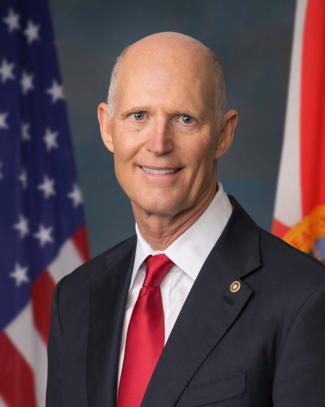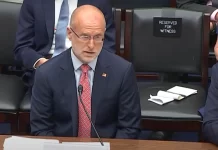Welfare reform, initiated by Republican governors at the state level in the 1990s and later passed by a Republican Congress and signed by a reluctant President Bill Clinton in 1996, was one of the nation’s most successful legislative efforts. It required most able-bodied people to work to receive welfare benefits. Democrats and bureaucrats spent the next 25 years trying, and largely succeeding, to undermine those reforms. Now, Sen. Rick Scott (R-Fla.) has introduced a bill to re-establish work requirements in welfare.
If Republicans retake the House and Senate in 2022, they may be able to push through something like Scott’s “Let’s Get to Work Act,” just as Republicans did with Clinton.
One of the 1990s Republican leaders on welfare reform was former Wisconsin Governor Tommy Thompson.
The Heritage Foundation’s welfare scholar, Robert Rector, wrote extensively about Thompson’s efforts. “Thompson initiated a series of reforms that cut welfare dependency during the late 1980s and blocked any resurgence during the 1990-93 recession. Starting in 1994, a second round of more sophisticated work-related reforms has caused the caseload to nosedive further.”
Rector says that by 1997, Wisconsin had cut its welfare caseload in half. That success story got the attention of other states and the media, with many of the Republican-led states following Thompson’s lead.
I was monitoring welfare reform at the time, but focused more on a pilot program in Oregon. Here’s how it worked.
Able-bodied people entering the welfare office were told they would have to go to work.
They could find a job on their own or the state agency would help them find a job. Or the person could take a subsidized job with a participating employer.
The people running the Oregon initiative, called the Full Employment Program, said that given those options, roughly a third of the inquirers would turn around and walk out, saying if they had to work, they’d find their own job.
Another third took the state’s help in finding one of the subsidized jobs.
But a third faced some significant challenges, such as substance or domestic abuse. And some were well along in a pregnancy. They were given a little time and assistance, if needed, to address those challenges or deliver the child. But after that they had to work.
The innovative part of this program was the assistance finding a job. That effort redirected federal and state money from food stamps and Aid to Families with Dependent Children (AFDC), the main cash-benefit welfare program at the time, and used those funds to pay the beneficiary’s wages, which had to be at least the minimum wage.
Participating private sector employers hired the welfare recipients for four months. It had to be a new job, not one taken from another worker. Thus, the employer got a free, or mostly free, employee for a limited time.
If the employer and beneficiary were satisfied, the employee was given a full-time job and dropped from welfare benefits, though they could stay on Medicaid if needed.
There was no problem enlisting willing employers. And the welfare recipient/employee had an opportunity to try out a new job for several months. It was a win-win for everyone, including taxpayers.
But shouldn’t these people have some job training first? The program’s philosophy was the best training was on-the-job training. Welfare recipients can spend, or waste, a lot of time in job training and still never get a job. And most entry-level jobs don’t need much training anyway, just someone willing to show up for work and learn.
Unfortunately, Scott’s “Let’s Get to Work Act” will likely face an uphill battle in Congress. Seemingly, the only welfare reform the left supports is either free money or free benefits, or both.
In recent years, when certain states have tried to tie work requirements to receiving Medicaid benefits, Democrats denounced the idea. But that’s just one more example of their being out of step with the public, and especially the poor.
In the 1990s, I talked to several people who got a job and broke the cycle of welfare dependency through the Oregon pilot program. To a person, they were thrilled. They explained how they, and in some cases their families, had lost confidence in themselves and their abilities. But now they were gainfully employed, providing for their families, and had gotten back their self-respect.
As Sen. Scott points out, “A job creates income, independence and security—it’s the foundation of the American Dream. …The American people want to work. People want to support themselves and their families, and be independent, not reliant on government programs.”
I agree—that’s what people want. It’s just not clear if that’s what the left wants.
Originally published by the Institute for Policy Innovation. Republished with permission. For more Budget & Tax News.










